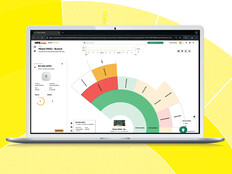802.11ac Wi-Fi Standard Grows in Popularity with Federal Government
The Postal Service is exploring the use of self-guided vehicles that can move mail within processing and distribution centers — something that may not be possible without 802.11ac, the newest version of the Wi-Fi standard.
802.11ac supports gigabit speeds and is the successor to 802.11n. Sales of 802.11ac access points (APs) doubled each quarter of 2014 in the consumer market, according to Infonetics Research, but government is taking an exploratory approach.
“One application is to set up cameras to allow senior technicians remote from the job site to observe and guide maintenance work,” says John Edgar, the Postal Service’s vice president of IT. “We’re testing the concept of self-guided vehicles that use Wi-Fi as part of their control mechanism to move mail. There is also some exploratory work on remote-controlled mobile robots, which would move through facilities to provide video of ongoing operations.”
Places for Change
As is the case with most emerging technology, there are a few caveats to using 802.11ac. The connection to each AP must be fast enough to support 802.11ac speeds or else it produces a bottleneck. When developing an 802.11ac strategy, agencies should consider whether their backhaul must be upgraded as well.
Wi-Fi is used mainly inside of offices and other buildings, where walls and electronic devices can interfere or cause a weaker signal. 802.11n uses antenna technologies such as multiple-input, multiple-output to mitigate those problems. 802.11ac adds enhanced versions of those technologies for additional speed and reliability.
Percentage of installed Wi-Fi access points compatible with the 802.11ac standard
SOURCE: Infonetics, “WLAN market report,” December 2014
DHS Doing Tests
The Department of Homeland Security is testing 802.11ac with agencies such as the Federal Emergency Management Agency, looking into scenarios in which 802.11ac may provide better coverage, says Robert Palmer, Acting Deputy Director of the Enterprise System Development Office at DHS. One idea is for DHS to use 802.11ac in the field to supplement or replace cellular service.
“The Department of Homeland Security is testing 802.11ac amongst its mission communities, looking into scenarios in which 802.11ac may provide better coverage,” Palmer says.
For agencies not testing 802.11ac on their networks, there are other opportunities to get hands-on time with the new technology.
“DISA hosts several conferences and workshops for staff and other DOD and government agencies,” says David Stickley, Defense Information Systems Agency services executive. “We plan to pilot the 802.11ac technology in conference and meeting areas first.” The Health and Human Services Department plans to replace its 802.11n access points with 802.11ac models over the next five years to bolster its mobility program.
Mike Jacques, a senior network engineer at the department, says the cost of 802.11ac APs is now about the same as the cost incurred for APs operating on the 802.11n standard when they first hit the market.
The price point allows agencies to bring in a superior technology for a modest investment, giving them a greater cost-to-performance ratio, Jacques says.
A 2014 Enterprise Strategy Group survey examined federal adoption of 802.11ac-ready equipment and found that 20 percent of agency respondents are in the process of deploying the technology. Another 27 percent are planning a deployment, while yet another 27 percent are actively investing and researching how the technology may benefit their agency.
A key driver behind the adoption of 802.11ac is the greater speeds it offers, which can help agencies better handle the growing amount of bandwidth required to keep employees working productively. If the survey results are any indication, 802.11ac will quickly become the standard for innovative government agencies.









